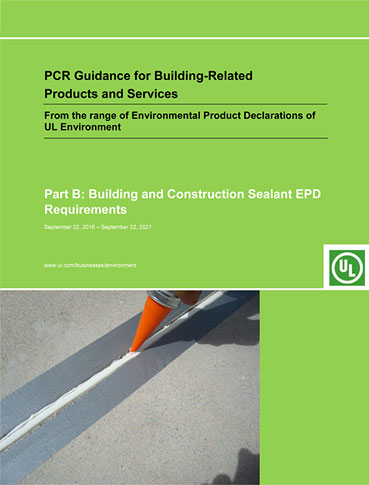Product Category Rule (PCR) for Sealants
PCR For Sealants
The Adhesive and Sealant Council (ASC), along with UL Solutions as the program operator has released a product category rule (PCR) for sealants covering North America.
PCRs are documents that define the rules and requirements for Environmental Product Declarations-EPDs (LCAs) of a certain product category. They are vital for the concept of environmental declarations according to ISO 14025 as they enable transparency and comparability between different EPDs (LCAs) based on the same PCR.
This document contains the Requirements for an Environmental Product Declaration (EPD) from the range of Environmental Product Declarations published by UL Environment in coordination with the EN 15804 standard. The Requirements on the Project Report used to inform the EPD are contained in UL Environment’s Part A: Calculation Rules for the Life Cycle Assessment and Requirements on the Project Report. This Part B document, coupled with the Part A, conforms to the EN 15804 and ISO 21930 sustainability standards for EPD reporting.
Sealants are materials with adhesive properties that are formulated primarily to fill or seal gaps or joints between two surfaces. The main purpose of sealants is to prevent air, water, and other environmental elements from entering or exiting a structure while permitting limited movement of the substrates. Sealants have a suitable viscosity to extrude through a nozzle and then be tooled to a desired profile, or to flow sufficiently for gravitational self-leveling. Sealants are used for a variety of commercial and residential applications and are a critical component for building design and construction. Common sealants include silicone, acrylic, urethane, butyl and other polymeric types.
The system boundary of this PCR is cradle-to-gate.
Download the Product Category Rule (PCR) for Sealants…


